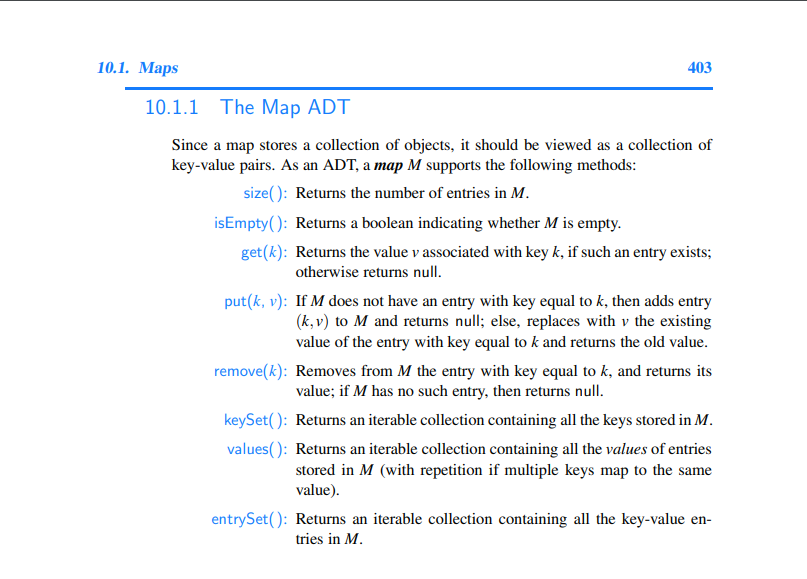Answered step by step
Verified Expert Solution
Question
1 Approved Answer
IN JAVA, implement the Map ADT based on Separate Chaining Hash Table., which is in Section 10.2.2. That means implementing all the 8 functions based
IN JAVA, implement the Map ADT based on Separate Chaining Hash Table., which is in Section 10.2.2. That means implementing all the 8 functions based on Separate Chaining Hash Table and run your codes on Example 10.1. Your program should print out that table in Example 10.1.



Step by Step Solution
There are 3 Steps involved in it
Step: 1

Get Instant Access to Expert-Tailored Solutions
See step-by-step solutions with expert insights and AI powered tools for academic success
Step: 2

Step: 3

Ace Your Homework with AI
Get the answers you need in no time with our AI-driven, step-by-step assistance
Get Started


